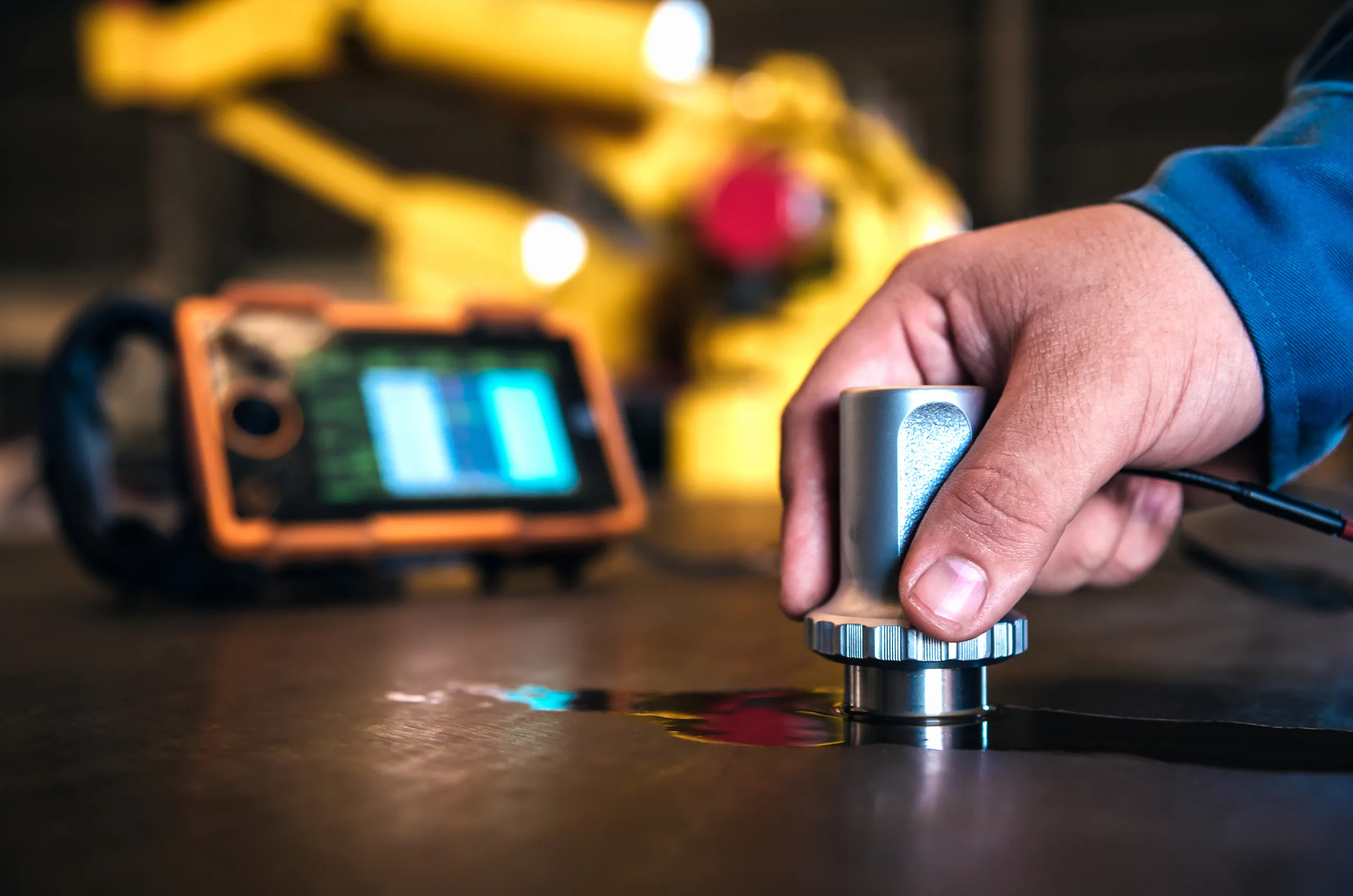 Ultrasonic
Testing (UT): A Key Non-Destructive Testing Method
Ultrasonic
Testing (UT): A Key Non-Destructive Testing Method
🎯 Main Purposes of Ultrasonic Testing:
✅ Key Benefits of UT:
- Full-Depth
Inspection:
Detects surface and deep flaws, unlike some surface-only techniques.
- Radiation-Free: Safe to
use in any environment—no X-rays or radiation hazards.
- High
Accuracy:
Sensitive to even minute and critical discontinuities.
- Flexible
Applications:
Works on metals, composites, plastics, and more.
- Portable
Equipment:
Small, mobile devices allow on-site inspections, even in tight or
remote locations.
- Immediate
Results:
Quick feedback speeds up repair and maintenance decisions.
- Detailed
Evaluation:
Advanced UT provides flaw size, depth, shape, and location—useful
for risk assessment.

⚠️ Limitations of Ultrasonic Testing
- Challenging
Shapes:
Complex geometries may require special probes or setups.
- Surface
Preparation:
The surface must be clean and smooth for proper coupling.
- Couplant
Required:
A gel or liquid is needed between probe and material for sound
transmission.
- Material
Restrictions:
Less effective on coarse-grained or soft materials (e.g., cast
stainless steel, rubber).
- Defect
Orientation:
Certain flaw directions are harder to detect—may require multi-angle
scanning.
- Trained
Operators Needed:
UT requires skilled, certified technicians familiar with wave
behavior and data interpretation.
🛠️ Understanding
How UT Works
UT
works by sending high-frequency sound waves into a material using a
probe (transducer) with a couplant layer to help transmission. When
sound hits a boundary or flaw, it reflects back to the probe.
The
transducer converts these sound waves into electrical signals, which
appear as waveforms on a screen. By analyzing the timing and amplitude
of these signals, inspectors can identify discontinuities and their
locations.
Skilled
UT practitioners understand wave types, display formats, and equipment options,
making UT adaptable to many industries and materials.
🌊 How Sound Waves Interact with
Materials
The sound waves
used in UT are above human hearing—typically over 1 MHz. As these
waves travel through the test object, they:
- Reflect off
flaws or material boundaries
- Refract
through different material densities
- Penetrate
deep for internal inspection
These
interactions help inspectors locate and classify internal anomalies
accurately.
 🔄 Wave Modes in
Ultrasonic Testing
🔄 Wave Modes in
Ultrasonic Testing
⚙️ UT Testing
Modes🔸 Pulse-Echo Mode
- A single
transducer sends and receives signals.
- Flaws are
detected based on the echo signal returned from the material.
🔸 Through-Transmission Mode
- Uses two
transducers—one for sending, the other for receiving.
- A loss or
weakening of signal indicates a flaw between the two probes.
🧪 Common Ultrasonic Testing Techniques
1️⃣ Contact Testing
- Straight
Beam:
Probe placed directly on surface.
- Angle Beam: Uses a
wedge to send sound at an angle—common for weld testing.
- Surface
Wave:
Targets defects on or near the surface.
2️⃣ Immersion
Testing
- Test object
and probe are submerged in water.
- Ideal for large
or sensitive parts in aerospace or manufacturing.
3️⃣ Air-Coupled Testing
- Uses air
instead of liquid to transmit sound.
- Used on composites
or delicate surfaces; requires low frequency due to air attenuation.
🚀 Advanced UT
Techniques
🔹 Phased Array UT (PAUT)
- Uses
multiple elements to focus and steer the beam.
- Produces 2D/3D
flaw images for precise evaluation.
🔹 Time of Flight Diffraction (TOFD)
- Two
probes—transmitting and receiving.
- Measures
diffraction at flaw tips for accurate sizing.
- Produces 2D
images; often used with other techniques.
🔹 Full Matrix Capture (FMC) + Total
Focusing Method (TFM)
- Gathers data
from all probe elements.
- Uses
software to digitally focus, producing detailed internal images.
🔹 Electromagnetic Acoustic Transducer
(EMAT)
- No couplant
needed; uses magnetic fields to create waves.
- Best for high-temp,
fast-moving parts.
- Requires special
equipment and larger probes.
🔹 Guided Wave Testing
- Sends waves
along the length of the structure.
- Inspects remote
areas (e.g., buried pipes) from a single point.
- Needs expert
data interpretation due to complex wave interactions.
✅ Conclusion
Ultrasonic
Testing is a safe, reliable, and precise method for inspecting materials
and components without causing damage. Whether you're assessing weld quality,
measuring thickness, or scanning for flaws deep inside a structure, UT offers versatile
solutions across industries.
Success with UT
depends on:
- Skilled
technicians
- Proper
calibration
- Understanding
of wave behavior and limitations
When used
effectively, Ultrasonic Testing helps maintain industrial safety,
reliability, and compliance.







Ultrasonic
Testing (UT): A Key Non-Destructive Testing Method
🔄 Wave Modes in
Ultrasonic Testing
